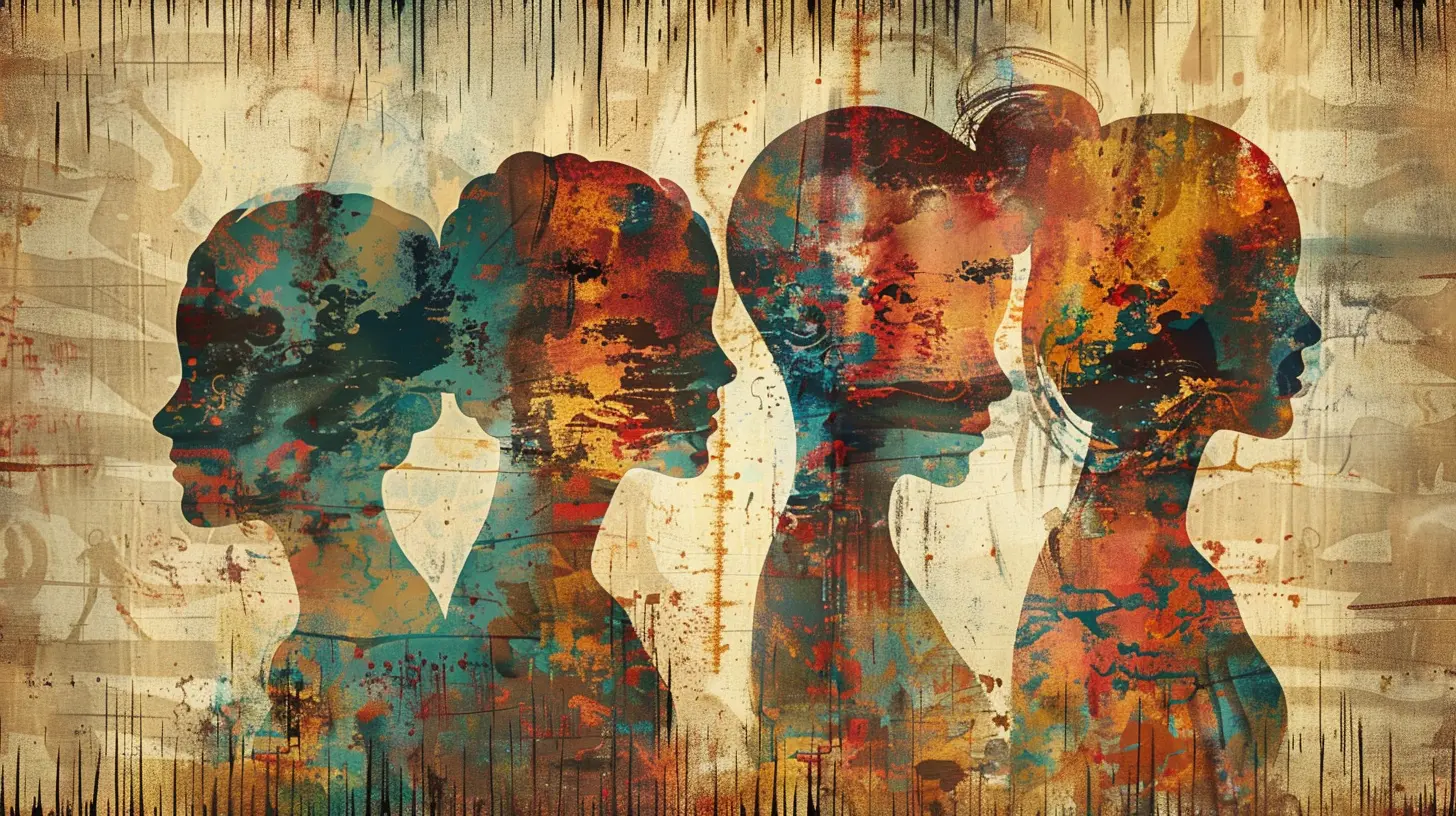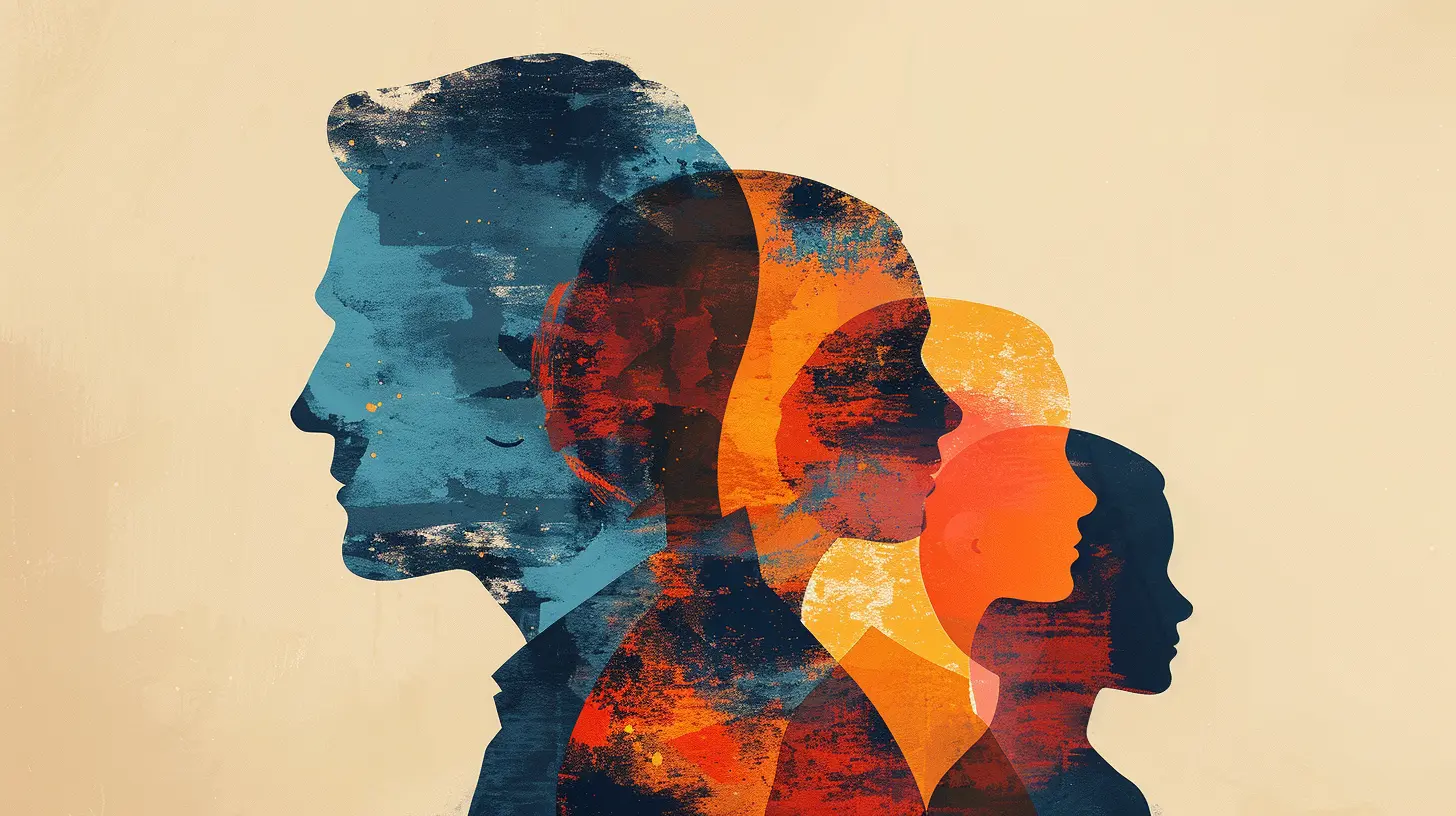Unpacking the Role of Family Dynamics in Psychosomatic Disorders
19 September 2025
Let’s talk about something a little more personal today—our families. Yep, the people we grow up with, share refrigerators with, sometimes roll our eyes at during holiday dinners… and love unconditionally (even if they drive us a little bonkers). You might be surprised to know that our family environments can have a big impact on our health—mental and even physical.
You’ve probably heard of stress causing headaches or stomach problems, right? That’s a tiny peek into what we call psychosomatic disorders. But here’s the twist: family dynamics can play a huge role in triggering or aggravating these conditions. Fascinating? Absolutely. Complicated? Oh, for sure.
So grab your favorite comfy drink, and let’s unpack this together.
What Are Psychosomatic Disorders?
Let’s break it down. The word “psychosomatic” sounds like something straight out of a psych textbook, but it’s actually pretty straightforward. “Psycho” refers to the mind. “Somatic” is all about the body. Put them together, and you get physical symptoms that are either influenced by or directly caused by mental or emotional stress.Imagine this: You’re stressed about something big—maybe a toxic relationship or a stressful home environment—and suddenly, your body starts reacting. You get migraines, your skin breaks out, your stomach’s in knots, or you can’t sleep. Sound familiar? That’s the mind-body connection at work.
These are real symptoms. They’re not “all in your head,” even though the root cause might be emotional rather than physical.
The Invisible Threads Between Family and Health
Have you ever noticed how tension in the house can make you feel… off? That’s no coincidence. Family dynamics—the patterns of interaction between family members—can heavily influence how safe, supported, and emotionally regulated we feel.Now, let’s dive deeper into how all this ties in with psychosomatic disorders.
How Family Dynamics Set the Stage
1. The Role of Emotional Expression (Or the Lack Thereof)
Some families are great at expressing emotions in a healthy way. They talk about feelings openly, listen, validate, and respond with empathy. Others? Not so much.In families where emotions are suppressed, punished, or ignored, children can grow up struggling to process their feelings. They may not even realize they’re stressed or upset because they’ve learned to bury it deep. And guess what? The body often steps in to speak when the mouth can’t.
So, repressed emotions don’t go away—they just find another way to come out. Often, through physical symptoms like chronic pain, fatigue, or skin issues.
2. Enmeshment and Boundaries: Too Close for Comfort
Enmeshment sounds cozy, but it's far from it. In enmeshed families, personal boundaries are blurred. It’s like everyone’s in everyone else’s business all the time—thoughts, feelings, and expectations are shared to an unhealthy degree.You can’t breathe emotionally because you’re constantly absorbing someone else’s stress, guilt, or anger. Over time, this emotional overload can translate into physical symptoms.
For example, when you're constantly walking on eggshells to avoid upsetting a family member, your body might stay in fight-or-flight mode. Not exactly a recipe for good health.
3. Chronic Conflict and Hostility
Picture a household where arguments are the norm, where there’s yelling, passive-aggressiveness, or even emotional manipulation. Living in that environment creates chronic stress, and chronic stress messes with everything—your immune system, your hormones, your digestion, your sleep.In extreme cases, people from high-conflict families may develop psychosomatic symptoms like irritable bowel syndrome (IBS), tension headaches, or panic attacks.
The body is essentially screaming, “Please stop the madness!”
4. Parental Modeling of Illness Behavior
Kids are sponges. They watch, they learn, and they repeat—even the stuff we wish they’d ignore.If a parent consistently deals with emotional distress through physical complaints—or uses illness to avoid responsibilities or gain attention—the child may unconsciously adopt similar patterns. It’s not manipulation; it’s learned behavior.
The child might grow into an adult who’s more vulnerable to psychosomatic disorders because that’s how they’ve learned to express pain or stress—through the body.
The Silent Stress of Unmet Emotional Needs
Sometimes, it’s not about what’s present in a family, but what’s missing. Emotional neglect isn't always obvious. It’s quiet, like the absence of a warm hug when you needed one most or a conversation that never happened but should’ve.Children who grow up feeling emotionally unsafe or invisible often internalize their distress, and that internalization likes to show up as physical symptoms. It’s like the emotional discomfort has nowhere else to go, so it takes up residence in the body.
The Child Who Becomes the “Symptom Bearer”
Here’s a concept that might blow your mind: in some families, one member (often a child) becomes the “symptom bearer.” That means they manifest the family’s unspoken dysfunctions through physical illness or emotional struggles.It’s not their fault. It’s not even conscious. But it’s kind of the family system’s way of releasing pressure.
These kids may be the ones constantly sick, anxious, or needing special attention. Unfortunately, their bodies are paying the price for the family’s unresolved issues.
Codependency, Control, and the Pressure to Be "Okay"
In some families, there’s an unspoken expectation to always be okay—to keep the peace, to never rock the boat. Maybe it’s a parent who puts too much pressure on the kids to succeed, or a family that avoids tough conversations at all costs.If you grow up in an environment like this, admitting you're not okay can feel like failure. Instead of expressing emotional distress, you might internalize it to avoid guilt, shame, or conflict. Again, the body picks up the slack and shows your inner struggle in physical form.
Breaking the Cycle: Healing Starts With Awareness
Okay, deep breaths. This is a lot, right? But here comes the good news: just because your family had a certain dynamic doesn’t mean you’re doomed to live with psychosomatic symptoms forever.You can break the cycle.
1. Therapy Can Be a Game-Changer
Working with a therapist—especially one who understands family systems or somatic experiencing—can help you reconnect with your emotions, set boundaries, and process the stress your body has been holding onto for years.Therapy creates a safe space to unlearn old patterns and replace them with healthier ways of coping.
2. Learn to Recognize Your Triggers
Start paying attention to what—and who—causes your physical symptoms to flare up. Do you get headaches after talking to a specific family member? Does your stomach hurt when you suppress your feelings?Journaling can help you track these patterns over time, allowing you to connect your emotional dots to your physical pain.
3. Set Boundaries (Seriously, It's Not Selfish)
If you grew up in a family where boundaries weren’t a thing, setting them as an adult can feel wrong. But boundaries are just you taking care of your emotional space—and your health.Practice saying “no” without guilt. Create a little healthy distance if needed. You can love your family and still protect your peace.
4. Get Back in Touch With Your Body
When you’ve spent years ignoring what your body is trying to tell you, it can feel foreign to start listening. Try practices like yoga, mindfulness, or even simple breathwork. These help you reconnect with your physical self in a safe and gentle way.Your body has always had your back—it deserves some TLC.
It's Not About Blame—It's About Understanding
Here’s something really important: this article isn’t about blaming families. Most of the time, dysfunction isn't intentional. People parent the way they were parented, and emotional pain can get passed down like a family heirloom. But awareness? That’s how we change the pattern.Understanding the link between family dynamics and psychosomatic disorders gives us the power to heal—not just ourselves, but future generations too.
Wrapping It Up: The Mind-Body-Family Connection
Family—it’s where we begin. It shapes how we see the world, how we connect with others, and yes, how we feel in our own skin. When family dynamics are unhealthy, they don’t just mess with our heads—they mess with our bodies too.But the beauty of the mind-body connection is that healing is possible from both ends. Work on your emotional health, and your physical health often follows. And as you build boundaries, explore therapy, and process your past, you’re not just healing yourself—you’re disrupting cycles that may have been running for generations.
So next time your body whispers (or shouts), “Hey, something’s off,” take a moment to check in emotionally. You might just uncover a connection that changes everything.
all images in this post were generated using AI tools
Category:
Psychosomatic DisordersAuthor:

Matilda Whitley
Discussion
rate this article
1 comments
Jade Thompson
Families shape us—let’s heal together with understanding!
September 23, 2025 at 2:37 PM

Matilda Whitley
Thank you for your insightful comment! Healing through understanding family dynamics is indeed crucial for addressing psychosomatic disorders.


